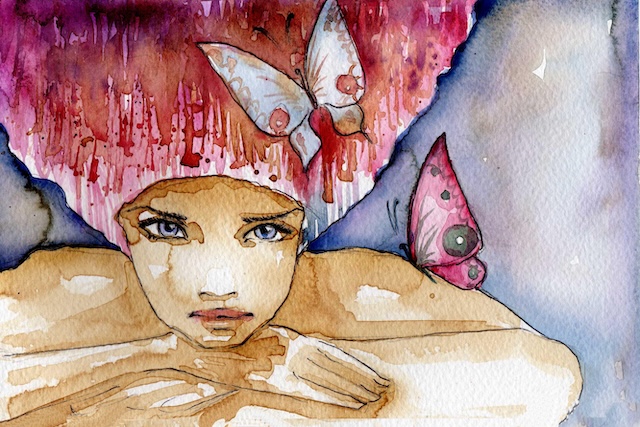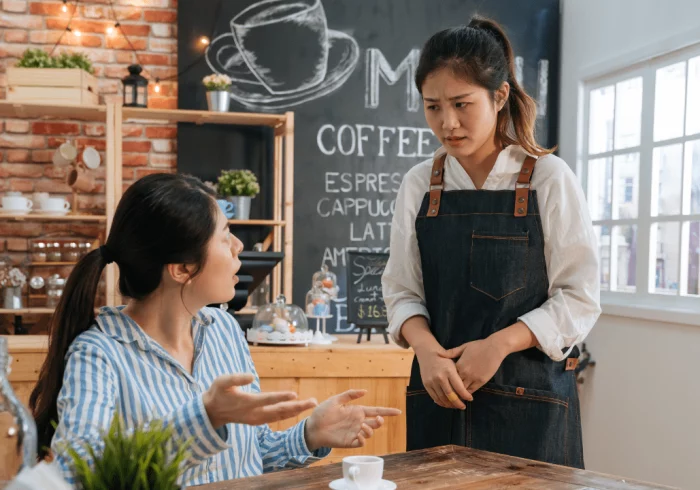
“Ache isn’t improper. Reacting to ache as improper initiates the tangle of emotional resistance in opposition to what’s already occurring.” ~Tara Brach
The picket meditation corridor creaked softly as sixty folks shifted of their seats, looking for consolation within the silence. Outdoors, winter rain tapped in opposition to the home windows, a delicate metronome marking time. I sat cross-legged on my black cushion, watching sweat trickle down my temple regardless of the cool air. My legs burned as if I’d been working for hours, although I hadn’t moved in forty-five minutes.
It was day three of my first six-day silent meditation retreat, and I used to be studying my first profound lesson about bodily ache—not from my meditation trainer, however from my protesting physique. Little did I do know that this expertise would develop into an important basis for navigating a far larger problem that lay forward.
The ache began as a whisper in my decrease again, a delicate suggestion that maybe I ought to modify my posture. Inside minutes it grew to a shout, then a scream. Whereas different practitioners appeared serene, their faces tender and our bodies nonetheless, I used to be waging an inside warfare. Each couple of minutes, I’d shift my weight barely, looking for that elusive snug place. The cushion that had felt so excellent throughout the orientation session now appeared as unyielding as concrete.
The meditation directions echoed in my thoughts: “Simply sit and observe your breath.” However my physique had different plans. Every inhale introduced consciousness of recent discomfort—a pointy knife in my hip, a boring ache in my shoulders, pins and needles racing down my calves. The bodily sensations turned my complete world, drowning out any hope of specializing in my breath.
I attempted every part. Completely different cushions borrowed from the prop closet. Numerous positions—Burmese, half-lotus, kneeling. I even snuck to the again of the corridor to lean in opposition to the wall, feeling like a meditation failure as I watched the straight backs of extra skilled practitioners forward of me.
Then, on day 4, one thing shifted. Maybe it was exhaustion from preventing my expertise, or possibly it was the knowledge of give up, however I lastly heard what my trainer had been saying all alongside: “Don’t attempt to change what’s arising; simply be with it with kindness.”
For the primary time, I finished making an attempt to repair my discomfort. As an alternative, I received inquisitive about it. What did the ache truly really feel like? Was it fixed, or did it pulse? The place precisely did it start and finish? As I explored these questions with real curiosity relatively than resistance, one thing exceptional occurred—whereas the bodily sensations remained, my struggling started to lower.
“Within the midst of ache is the entire educating,” Pema Chödrön’s phrases would develop into my lifeline two years later, when a again damage remodeled my relationship with ache from a periodic problem into a relentless companion. I’d be a part of the ranks of hundreds of thousands residing with continual ache—a silent epidemic that impacts a couple of in 5 adults globally.
Whereas drugs can typically boring the sharp edges of bodily struggling, many people study that managing continual ache requires extra than simply medicine. It calls for an entire reimagining of our relationship with our our bodies and with ache itself.
The teachings from that meditation corridor now performed out in vivid element by each second of my day by day life. Easy duties turned workout routines in aware motion. Getting off the bed required a cautious choreography of breath and movement. Choosing up a dropped pen turned a apply in endurance and physique consciousness. Every motion referred to as for a similar cautious consideration I’d realized to convey to meditation.
The bodily ache was only the start. Within the darkness of sleepless nights, mendacity on my flooring as a result of no different place introduced reduction, my thoughts raced with infinite worries: Would I ever get well? May I proceed counseling my purchasers in particular person? How would I pay the mounting medical payments? These ideas circled like hungry wolves, testing the bounds of my newfound apply of acceptance.
Working as a therapist introduced its personal distinctive challenges. I vividly bear in mind sitting throughout from purchasers, sustaining my therapeutic presence whereas searing ache radiated from my tailbone by my complete backbone. Every session turned a apply in twin consciousness—being current for my purchasers whereas acknowledging my very own expertise. Some days, the hassle to take care of this stability left me depleted, with barely sufficient power to drive residence.
There was additionally the exhausting social dance of continual ache. The easy query “How are you?” turned sophisticated. Telling folks in regards to the fixed ache felt burdensome after some time. Nobody desires to all the time be the one that’s struggling. So as an alternative, I’d smile and say, “I’m effective,” swallowing the reality together with the discomfort. These small acts of concealment created their very own form of fatigue, a lonely house between the general public face and personal actuality.
I invite you to pause and replicate by yourself relationship with ache. When discomfort arises, what tales does your thoughts create about it?
Discover how your physique responds—the refined tightening, the want to push away what’s troublesome. Take into account what it’d really feel wish to create just a bit house round your ache, like opening a window in a stuffy room.
Typically I consider ache as an undesirable home visitor. We didn’t invite it, we don’t need it to remain, however preventing its presence solely creates extra stress in our residence. As an alternative, we will acknowledge it’s right here, set acceptable boundaries, and proceed residing our lives round it. Some days we’d even uncover surprising items in its presence—a deeper appreciation for good moments, elevated empathy for others’ struggles, or the discovery of our personal resilience.
Working with ache mindfully reveals that therapeutic occurs on a number of ranges. After we reply to bodily discomfort with light consciousness, we begin noticing how our ideas create narratives in regards to the ache, how feelings come up in waves, and the way our nervous system responds to form consideration. By means of this apply, we will study to develop our consideration past the ache, discovering that even in troublesome moments, there may be additionally the heat of daylight on our face, the sound of birds exterior our window, the style of morning espresso.
Years later, my ache isn’t as extreme, but it surely stays a day by day companion. I carry a again pillow all over the place as if it’s an adjunct, mindfully selecting which occasions to attend and for a way lengthy. Gardening, as soon as a carefree pleasure, has develop into an train in presence—every motion a chance to hearken to my physique’s knowledge. Some days nonetheless discover me mendacity on the ground, being with no matter my physique is expressing in that second.
However there’s a profound distinction now. The place I as soon as pushed by ache with gritted tooth, I’ve realized to reply to my physique’s indicators with care and compassion.
This shift feels particularly priceless as I age, figuring out that new bodily challenges will possible come up. Every twinge and ache is now not an enemy to conquer however a reminder to concentrate, to maneuver extra slowly, to are inclined to myself with kindness.
The clock in that meditation corridor taught me about impermanence—how even essentially the most difficult moments finally move. My again damage taught me about acceptance and resilience. Collectively, these experiences confirmed me that whereas we will’t all the time select what occurs to our our bodies, we will select how we meet these experiences with consciousness and compassion. In doing so, we uncover that peace isn’t discovered within the absence of ache however in our capability to be with it skillfully.
About Katie Fleming Thomas
Katie is a trauma-informed psychotherapist, meditation trainer, and information who helps others domesticate mindfulness and resilience. She is the creator of Freebird Meditations, providing transformative guided practices, and ZenQuit, a mindfulness-based nicotine cessation program. When not guiding others, she finds meditation in on a regular basis life, gardening, baking sourdough, dancing, and mountain climbing along with her husband and animals. She believes true transformation occurs after we flip inward with curiosity and compassion.



